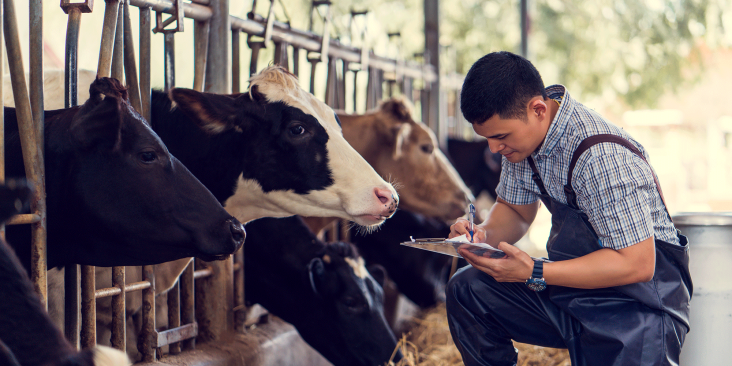By Pedro Piris-Cabezas and Glenda Chen
Airport activity emits a noxious cocktail of air pollutants, including ashy particulate matter, sulfur oxides, carbon dioxide, carbon monoxide, volatile organic compounds, hydrocarbons and nitrogen oxides. Among them, PM emissions from aircraft turbines often fly under the radar yet have an outsized impact on regional air quality and public health.
A new EDF analysis, Particulate matter pollution from aviation: Effective measures for changing the course of longstanding environmental injustices, documents nationwide trends of aviation-related health inequities across the U.S. and finds that between 5.8 million and 16 million Americans are at risk for exposure to these toxic aviation emissions. The analysis also finds that census demographics in airport-adjacent communities throughout the country reflect exposure disparities for ethnic minorities, low-income families and groups with limited access to high school education or English proficiency.
From runways to residences: confronting aviation’s hidden air quality crisis with real solutions Share on XMotivated by environmental injustice, the analysis presents targeted solutions to address the aviation industry’s hidden decades-long air quality crisis. U.S. federal and state regulators can, and should, introduce new rules to protect communities affected by aircraft emissions. These regulations can be implemented by fuel refiners at a negligible cost increase for aircraft operations.
Smaller than one-twentieth the width of a human hair, PM2.5 harms human health through respiratory, cardiovascular and developmental pathways, elevating risks of early mortality even under legally allowed levels. Though the U.S. Environmental Protection Agency regulates PM2.5 as a criteria air pollutant, aircraft-specific rules still fall short of protecting air quality.
Size distribution analyses have found that aviation tends to emit particles even smaller than nearby ground transportation, with high doses of ultrafine particles at sub-100-nanometer size. This makes aviation pollution especially dangerous for anyone breathing air nearby, because the smallest particles are understood to penetrate deep into the lungs and even cross into the blood stream. PM2.5 emissions in engine exhaust also contribute to global warming through contrail formation, in parallel to greenhouse gases. Persistent aircraft contrails are one of the key drivers of aviation’s short-lived non-CO2 climate impacts and are possibly twice as potent as aviation’s net CO2 impact.
Who bears the brunt of airport pollution?
As with other major pollution sources, PM exposure burden of aviation traffic is not fairly spread out. Proximity to fuel-burning aircraft creates an occupational and residential hazard for airport workers and nearby communities. Local studies at airports such as Boston Logan and Seattle-Tacoma have found that low-income populations and people of color are more likely to live in neighborhoods negatively affected by aircraft emissions.
EDF’s analysis builds on this research finding that millions of airport neighbors’ quality of life could be reclaimed across the nation if the Environmental Protection Agency and the Federal Aviation Administration take responsibility and use their regulatory powers. EDF’s findings and innovative geospatial methodology should assist regulators in building the evidence base for new rulemakings. Frontline and fenceline activists can also employ the analysis and data in their local advocacy and citizen science campaigns.
What is the EPA doing to regulate aviation’s PM emissions?
In late 2022, the EPA published an update to national aircraft engine performance standards that replaced the old smoke standard. This update added limits for direct PM emissions alongside the previous limits on NOx and its derivative PM, quoted per the engine standards adopted by the United Nations’ International Civil Aviation Organization in 2017 and 2020. The EPA chose to promote global uniformity in aviation standards and test procedures, but in so doing published regulatory limits far behind what current U.S. aviation technology can achieve. As such, the 2022 U.S. standard is too lenient to drive any improvements for public health beyond the status quo. While the EPA rule text recognizes environmental justice concerns for communities and workers exposed to airport PM pollution, there is still a gap between data and action.
Time for federal action
This longstanding and deadly environmental injustice is, however, one that can be remedied by swift, deliberate policy action. EDF’s analysis explores practical ways to reduce PM pollution as quickly as possible.
Fuel regulation capping aromatic content offers a faster solution than focusing solely on improving engine performance. Fuel regulation for cleaner jet fuel could build on the existing engine PM rule and be implemented swiftly to all jet fuel uplifted in the U.S. International coverage of arriving flights’ fuel burn could follow, via bilateral or ICAO agreements.
Aromatic hydrocarbons, the precursors to PM formation, are added to jet fuel for the safety of older aircraft. However, they tend to burn with a smoky flame and have a lower grade of fuel efficiency, making for both sooty and energy-guzzling flight. While current jet fuel composition standards permit up to 25% aromatics, concentrations as low as 8% are enough for all jets to fly safely. Tightening the ceiling to just above 8% would dramatically reduce tailpipe pollution while still being fully compatible with existing fuel quality standards and government flight safety certifications.
Scaling up the use of cleaner jet fuel involves fine-tuning refinery operations to ensure that combined streams of jet fuel from various production processes meet lower aromatic content requirements overall. Modern petroleum refineries already use common chemical processes to transform aromatic compounds into cleaner-burning hydrocarbons. Refineries can adjust factors like temperature, pressure, hydrogen flow and catalyst type to produce fuel with lower aromatics, which makes it possible to meet stricter limits on aromatic content using existing infrastructure. The cost of setting aromatics to just above 8% in jet fuel would amount to an increase in jet fuel cost for air carriers well below 2%, or less than 0.4% of their total operating expenses. Any potential cost increases should be significantly tempered with fuel efficiency gains and subsidies for clean hydrogen under the Inflation Reduction Act.
Alternative fuels, including sustainable aviation fuels also hold great potential in the mid- to long-run for reducing PM emissions if (and only if) synthesized free of aromatics. However, airport workers and communities need relief now. We can’t afford to keep them waiting through a gradual SAF rollout.
State-level regulatory action
Absent swift federal action, state-level regulatory authorities should move forward with implementing their own jet fuel regulations, particularly in jurisdictions with PM nonattainment areas near airports. No doubt, understanding the legal basis is a precondition for regulating jet fuel at state level. Good news here: state regulators are unlikely to run afoul of any of the federal statutes or doctrines in question.
Bolstering a first line of defense for environmental justice
Resetting the aromatics cap is part of a suite of necessary interventions — ranging from better combustor technology to electrification of ground support equipment. Though there is no single fix-all solution for the ills of cumulative inequity, fuel composition standards can bolster the first line of defense. This one measure could slash PM emissions by as much as 50 to 70%.
A cleaner flight means not only cutting carbon dioxide, but also protecting airport workers and communities living nearby. Everyone deserves to breathe clean air in the places they live, work and play. Equipped with the right information, environmental health officials can fulfill their duty to alleviate disproportionate burdens and change the course of aviation’s environmental injustices.










